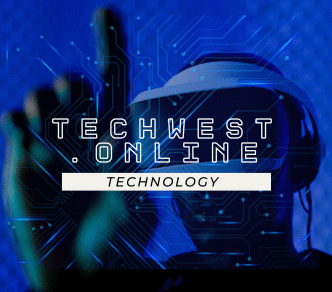Introduction to Voice-to-Text Technology
Voice-to-text technology, speech-to-text, or voice recognition, translates spoken language into written text through sophisticated algorithms and artificial intelligence (AI). This technology has revolutionized the way we communicate with devices, enabling faster, easier, and more efficient communication. The term “use voice to text technology crossword” emphasizes its special purpose of use in solving or generating crosswords, in addition to general applications in daily life. From helping individuals with disabilities to automating processes and enriching game experiences, voice-to-text technology is a breakthrough. This article discusses its uses, advantages, and effects on crosswords, optimized for search engines to engage readers looking for creative uses of this technology.

What is Voice-to-Text Technology?
Voice-to-text technology depends on artificial intelligence-based speech recognition platforms for converting spoken words into written content in real time. Natural language processing (NLP) and machine learning aid in recognizing accents, dialects, and speech patterns correctly. Google Assistant, Amazon Alexa, Apple’s Siri, and dictation software like Dragon NaturallySpeaking make use of this technology. In crosswords, voice-to-text makes it possible for users to type answers aloud, increasing accessibility and speed for fans. By optimizing for “use voice to text technology crossword,” we can market to niche groups who are interested in technology as well as puzzles.
How Voice-to-Text Technology Makes Crossword Puzzles More Engaging
1. Solving Crosswords with Voice Input
Voice-to-text technology makes it possible for crossword solvers to input answers by speaking them aloud directly into apps or devices, without the requirement of typing or writing. Games such as Crossword Puzzle Free or The New York Times Crossword feature voice recognition, so one can say answers such as “ENIGMA” to a clue and have it typed out in seconds. This is particularly useful for visually impaired players or players with motor handicaps. Copy that is optimized for “voice to text crossword apps” can appeal to puzzle lovers looking for accessible options.
2. Developing Crosswords
For crossword designers, voice-to-text simplifies the process of writing clues and answers. Designers can speak ideas into programs such as Crossword Compiler, which output them for editing. This is time-saving and enables designers to concentrate on creating challenging puzzles. Mentioning examples of voice-to-text applications for crossword design can increase SEO for searches such as “use voice to text for crossword design.”
3. Interactive Gaming Experience
Voice-to-text improves interactive crossword experiences, particularly on smart home devices. For example, users may play crosswords on Amazon Echo by giving voice answers to Alexa, which recognizes them through speech processing. This provides a hands-free, interactive experience for recreational gamers. Content emphasizing “voice to text technology in crossword games” can attract gamers who are technology-enabled.
4. Educational Applications
In classrooms, voice-to-text facilitates students in vocabulary and spelling practice with crosswords. Dictation tools can be utilized by teachers to generate puzzles or let students solve them orally, enabling inclusive education. Targeting phrases such as “voice to text technology for educational crosswords” can get the attention of teachers and students.
More General Applications of Voice-to-Text Technology
Aside from crosswords, voice-to-text technology has extensive uses that can be integrated into content to make it more comprehensive and SEO-friendly:
1. Accessibility
Voice-to-text enables people with disabilities, including those with visual or motor disabilities, to communicate and interact with technology. For instance, dictation software enables the use of emails, documents, or even crossword solutions without using hands. Content focusing on accessibility can use keywords like “voice to text for accessibility.”
2. Productivity and Workflows
Experts utilize voice-to-text to take minutes, write reports, or organize tasks. Applications such as Microsoft Dictate and Google Docs Voice Typing reduce processes, saving time. Adding productivity tips can inspire searches for “voice to text technology for work.”
3. Smart Devices and IoT
Voice-to-text is a part of smart assistants such as Alexa and Siri, allowing users to control their devices, set reminders, or complete crosswords through voice commands. Information on “voice to text in smart devices” can attract the attention of tech buffs.
4. Healthcare
In medical care, voice-to-text automates documentation. Physicians dictate patient notes into electronic health records (EHRs), increasing efficiency. Referencing special applications can attract searches such as “voice to text technology in healthcare.”
5. Language Learning
Voice-to-text supports language learners by recording spoken practice, enabling them to improve pronunciation and vocabulary. Voice-input crossword apps improve language ability through interactive crosswords. Copy on “voice to text for language learning crosswords” can appeal to students and teachers.
Advantages of Voice-to-Text Technology
1. Accessibility and Inclusivity
Voice-to-text enables crosswords and other activities for varied users with disabilities. Such accessibility increases the user base for puzzle apps and user satisfaction. Content emphasizing accessibility advantages can be ranked well for inclusive technology queries.
2. Speed and Efficiency
It is quicker than typing, enabling users to complete crosswords or write documents fast. For instance, dictating crossword answers can reduce solving time by minutes. Adding time-saving facts increases engagement.
3. Hands-Free Convenience
Hands-free use is facilitated by voice-to-text, which is suitable for multitasking or people with mobility issues. In crosswords, it enables one to solve puzzles while cooking or driving. Promoting “hands-free voice to text crossword” can engage busy users.
4. Accuracy Enhancements
New voice-to-text technologies, driven by AI, deliver high accuracy for accents and languages. This consistency raises user confidence in crossword apps and other software. Material on accuracy upgrades can engage technical readers.
5. Affordable Solutions
Numerous voice-to-text applications are either free or very low in cost, included in smartphones or programs such as Google Docs. This availability makes them attractive to crossword players and professionals alike. Emphasizing free applications can address budget-conscious searchers.
Challenges of Voice-to-Text Technology
-
Accuracy in Noisy Environments: Background noise can reduce transcription accuracy. Content can discuss advancements like noise-canceling microphones to address this issue.
-
Privacy Concerns: Voice data collection raises privacy issues. Highlighting secure platforms like Apple’s Siri, which processes data locally, can reassure users.
-
Learning Curve: Voice command may be difficult for some users. Including tutorials or hints can aim at searches such as “how to use voice to text for crosswords.”
-
Language Limitations: Improved, voice-to-text might not perform well with unusual dialects. Copy can elaborate on how NLP continues to improve to overcome this.
Sample Content Structure
Section 1: Introduction
-
Define voice-to-text technology and its relevance to crosswords.
-
Highlight its role in accessibility and efficiency.
-
Keyword: “use voice to text technology crossword.”
Section 2: Applications in Crosswords
-
Solving puzzles with voice input.
-
Creating clues and answers.
-
Interactive gaming with smart devices.
-
Educational uses for vocabulary.
-
Visual: Screenshot of voice-enabled crossword app.
Section 3: Broader Applications
-
Accessibility, productivity, smart devices, healthcare, and language learning.
-
Visual: Infographic illustrating various uses of voice-to-text.
Section 4: Benefits
-
Accessibility, speed, convenience, accuracy, and cost-effectiveness.
-
Visual: Chart comparing typing and voice input speeds.
Section 5: Challenges
-
Noise, privacy, learning curve, and language limits.
-
Visual: Timeline of voice-to-text evolution.
Section 6: Future Outlook
-
AI-powered enhancements and combination with AR/VR for immersive puzzles.
-
Visual: Graph forecasting voice-to-text market growth.
Section 7: Conclusion
-
Synopsize the voice-to-text effect on crosswords and beyond.
-
CTA: “Try voice to text technology for crosswords today!”
Future of Voice-to-Text Technology
The voice-to-text industry is anticipated to expand considerably due to AI and growing demands for accessibility. Possible future innovations are real-time multilingual crosswords, integration with augmented reality (AR) for deeper puzzle experience, and enhanced accuracy in noisy conditions. The worldwide speech recognition market can grow up to billions by 2030, providing opportunities for crossword app developers. Content writing based on these trends can fetch readers looking for “future of this technology crossword.”
Conclusion
The use of voice-to-text technology is revolutionizing the way we create and solve crossword puzzles, making them more efficient, accessible, and entertaining. It creates new opportunities for inclusivity, hands-free input, and improved workflows, offering benefits to both professionals and enthusiasts. Optimizing content for “use voice to text technology crossword” can engage a wide audience base ranging from gamers to educators. As AI goes on to improve, voice-to-text will increasingly transform crosswords and communication, leading to a more connected and accessible world.
